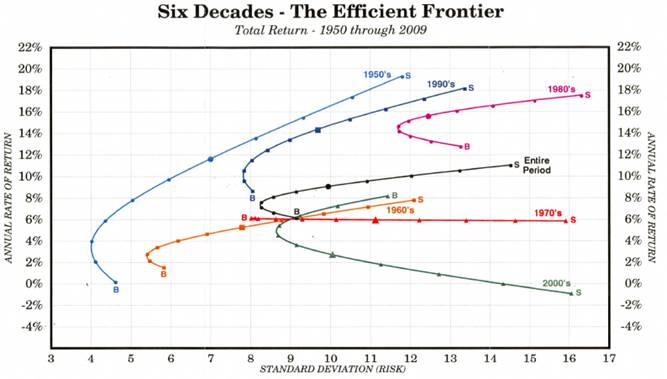gcgang
Thinks s/he gets paid by the post
- Joined
- Sep 16, 2012
- Messages
- 1,571
He says historical data is not much help when there are high stock market valuations and low interest rates. But stay tuned for his next update.
I believe your AA should reflect your situation and should be adjusted as circumstances warrant.
For example, if you retired 5 years ago with a 60/40 allocation, you probably have some very nice choices to make now. 1) your time frame is now five years shorter; 2) you have enjoyed excellent returns and have more assets. Now, it seems that you could choose 1) leave allocation 60/40, plan on leaving bigger legacy or spend more; or 2) reduce your risk, switching to something like 40/60 and still have same acceptable living standard.
AA should not be set and forget, it should be adjusted to your own situation. Although "glide path" sounds very impressive, and the idea of protecting oneself during your early years is appealing, you still need to pay some attention.
Sent from my iPhone using Early Retirement Forum
I believe your AA should reflect your situation and should be adjusted as circumstances warrant.
For example, if you retired 5 years ago with a 60/40 allocation, you probably have some very nice choices to make now. 1) your time frame is now five years shorter; 2) you have enjoyed excellent returns and have more assets. Now, it seems that you could choose 1) leave allocation 60/40, plan on leaving bigger legacy or spend more; or 2) reduce your risk, switching to something like 40/60 and still have same acceptable living standard.
AA should not be set and forget, it should be adjusted to your own situation. Although "glide path" sounds very impressive, and the idea of protecting oneself during your early years is appealing, you still need to pay some attention.
Sent from my iPhone using Early Retirement Forum

